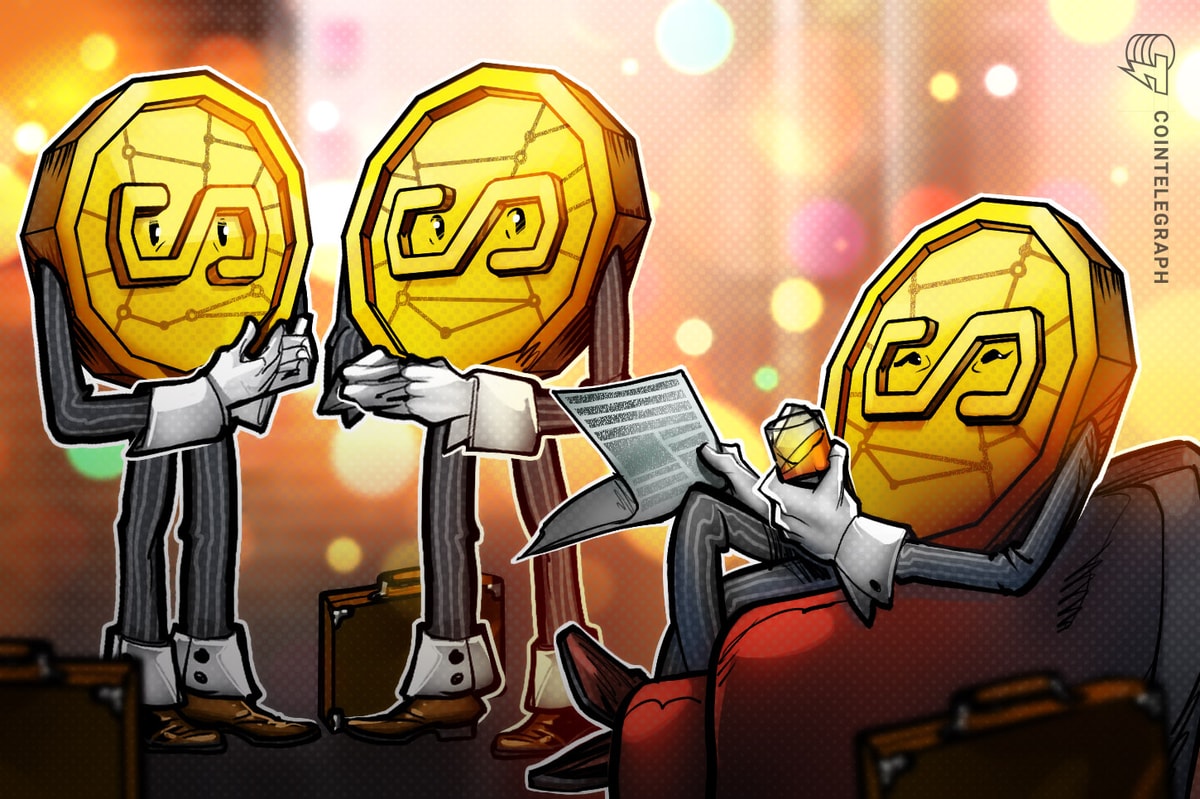
Opinion by: Maksym Sakharov, co-founder and group CEO of WeFi
The present markets are experiencing tailwinds on account of the tariffs imposed by the US administration and retaliatory measures from buying and selling companions. To date, nonetheless, market proponents say that Trump’s tariffs are primarily a negotiation technique, and their impact on companies and customers will stay manageable.
Market uncertainty drives institutional curiosity
Including to the uncertainty are the inflationary pressures that might problem the US Federal Reserve’s rate-cutting outlook. Moreover that, an impending fiscal debate in Washington over the federal funds can be inflicting jitters available in the market.
Resolving the debt ceiling stays a urgent concern, because the Treasury presently depends upon “extraordinary measures” to fulfill US monetary obligations. The precise timeline for when these measures will likely be exhausted is unclear, however analysts anticipate they could run out after the primary quarter.
Whereas the administration has proposed eliminating the debt ceiling, this might face resistance from fiscal conservatives in Congress. In accordance with a latest report, one sector experiencing regular progress is stablecoins regardless of this macroeconomic uncertainty. A lot of the quantity is pushed by flows in Tether’s USDt (USDT) and USDC (USDC).
Greenback-pegged stablecoins dominate the market
Stablecoins began as an experiment — a programmable digital foreign money that might make it simpler for customers to enter the crypto market and commerce completely different digital property. A decade later, they’re a important a part of the broader digital monetary infrastructure.
The stablecoin market cap presently stands at a report $226 billion and continues to broaden. Demand in rising markets drives this progress. A latest ARK Make investments report states that dollar-pegged stablecoins dominate the market. They account for over 98% of the stablecoin provide, with gold- and euro-backed stablecoins solely sharing a small portion of the market.
Along with this, Tether’s USDt accounts for over 60% of the full market. ARK’s analysis means that the market will broaden and embrace Asian currency-backed stablecoins.
Latest: US will use stablecoins to make sure greenback hegemony — Scott Bessent
Moreover that, digital property are going by a shift marked by “stablecoinization” and “dollarization.” Asian nations like China and Japan have offloaded report quantities of US Treasurys. Saudi Arabia has ended its 45-year petrodollar settlement, and BRICS nations are more and more bypassing the SWIFT community to scale back reliance on the US greenback.
Bitcoin (BTC) and Ether (ETH) have been historically the first entry factors into the digital asset ecosystem. Stablecoins have, nonetheless, taken the lead over the previous two years, now representing 35%–50% of onchain transaction volumes.
Regardless of international regulatory headwinds, rising markets have been adopting stablecoins. In Brazil, 90% of crypto transactions are undertaken by way of stablecoins, primarily used for worldwide purchases.
A Visa report ranks Nigeria, India, Indonesia, Turkey and Brazil as essentially the most lively stablecoin markets, and Argentina ranks second in stablecoin holdings. Moreover, six out of each 10 purchases within the nation have been made utilizing stablecoins pegged to the greenback, with close to parity between USDC and USDT.
This shift towards stablecoins in Argentina is pushed by excessive inflation and the necessity to shield towards the devaluation of the Argentine peso. Individuals in nations with unstable currencies flip to stablecoins, like USDT, to safeguard their wealth.
Deobanks and their position in high-risk areas
Stablecoins have paved the best way for a brand new era of economic companies. For instance, stablecoins have supplied the inspiration for decentralized onchain banks, or deobanks, that embrace stablecoins as their native foreign money.
Deobanks make digital banking and monetary companies accessible to everybody, even individuals who don’t meet strict account opening standards. Additionally they appeal to individuals who don’t belief conventional establishments with their cash. Customers hold full management of their funds by non-custodial accounts and luxuriate in real-time transaction transparency.
Deobanks’ decentralized nature replaces intermediaries with sensible contracts that join private wallets on to digital financial institution accounts. This method cuts prices and hurries up transactions. Onchain information transparently preserves each transaction element. The result’s a monetary mannequin that’s each environment friendly and inclusive.
What lies forward
Analysts predict the stablecoin market cap will surpass $400 billion in 2025. Deobanks convey a brand new edge to this progress, utilizing stablecoins to drive financial progress and broaden digital fee networks. They open contemporary avenues for cross-border commerce and new alternatives for monetary inclusion.
Within the subsequent few years, the mixed rise of stablecoins and next-generation onchain banks will remodel how cash strikes throughout borders and transactions are processed. The blockchain integration on the again finish and stablecoin basis will promote decrease charges, quicker funds and broader entry to monetary companies. The development represents a shift away from outdated programs and indicators a extra resilient monetary ecosystem.
Opinion by: Maksym Sakharov, co-founder and group CEO of WeFi .
This text is for basic data functions and isn’t meant to be and shouldn’t be taken as authorized or funding recommendation. The views, ideas, and opinions expressed listed here are the writer’s alone and don’t essentially replicate or symbolize the views and opinions of Cointelegraph.




